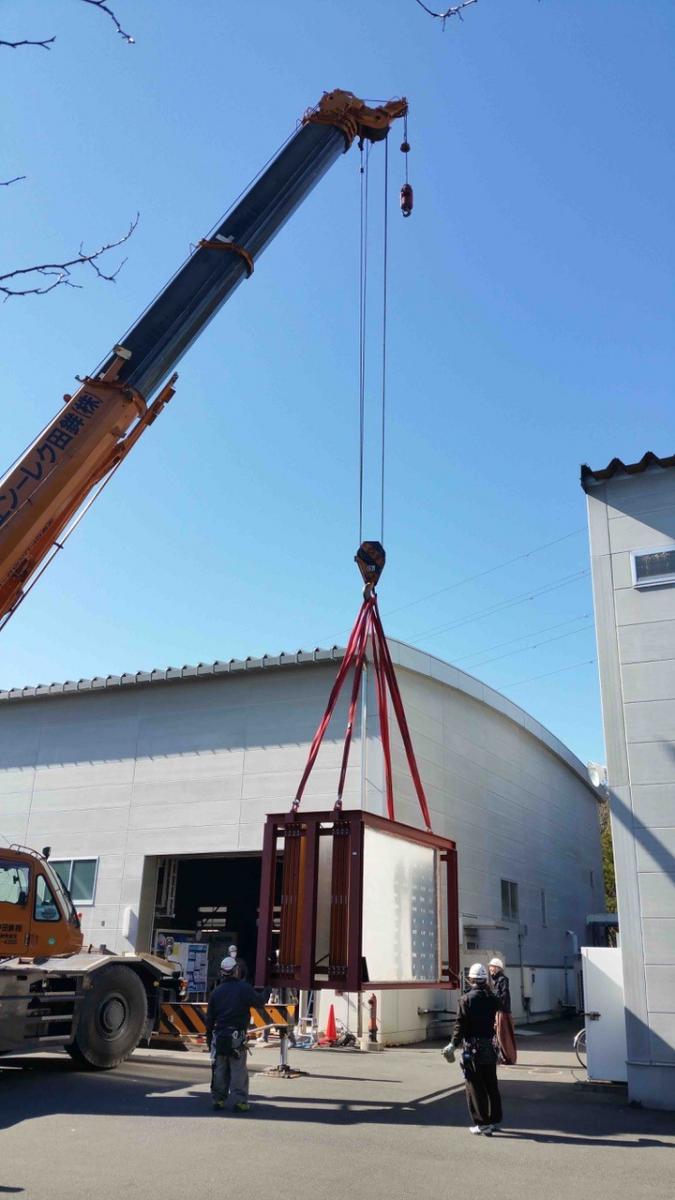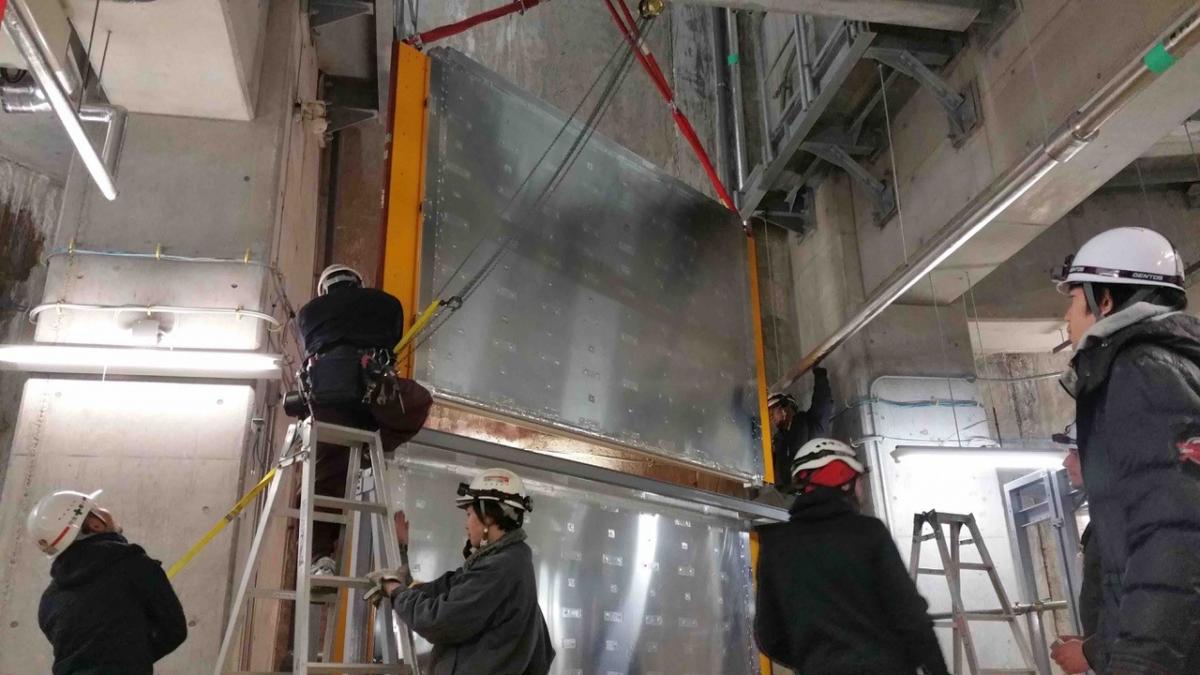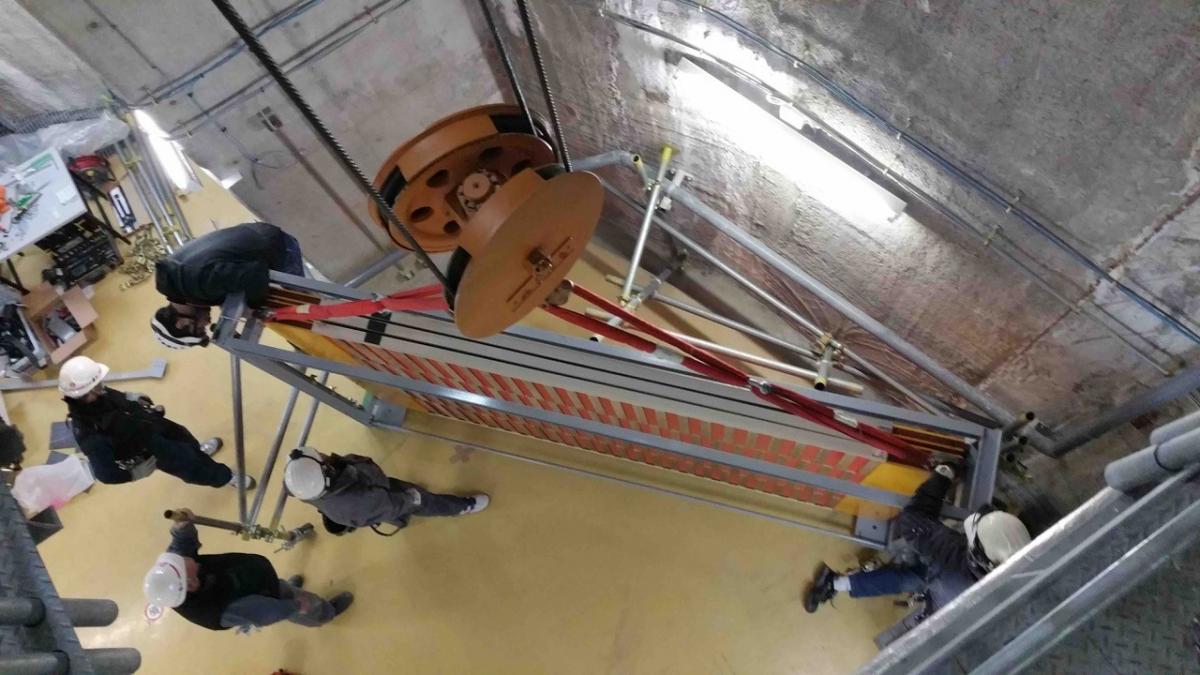BabyMIND records first muon tracks
Assembled as part of project NP05 at the CERN Neutrino Platform, the Baby MIND muon spectrometer has been recording its first muon tracks from neutrino interactions at J-PARC since 10th March. Baby MIND is designed to determine the momentum and charge of muons that are the product of neutrino interactions in the WAGASCI detector, located in the Neutrino Monitor building that houses the T2K ND280 near detectors, 280 m from the proton target and 295 km from the Super-Kamiokande detector. WAGASCI is exposed to a flux of neutrinos from the T2K neutrino beamline, with a slightly higher mean energy compared with ND280 due to the lower off-axis angle (1.6° vs 2.5°) with respect to the target.
Figure 1. The Baby MIND installation team at J-PARC including Baby MIND collaborators, external contractors Daiichi-Tekko, and KEK facility personnel.
Following project approval by the CERN Research Board in December 2015, the Baby MIND collaboration - comprising CERN, the Institute For Nuclear Research of the Russian Academy of Sciences(RU), and the universities of Geneva(CH), Glasgow(UK), Kyoto (JP), Sofia(BG), Tokyo(JP), Uppsala(SE), Valencia (ES), Yokohama(JP) - developed custom designs for magnet, scintillator and readout electronics modules. Details of the construction and testing at the experimental hall of the Proton Synchrotron in the East Area at CERN were reported in the September 2017 issue of this newsletter.
The logistics for transporting the Baby MIND muon spectrometer from CERN to Japan required the usual planning with several parties and the legal process of the donation of Baby MIND to KEK. The detector left CERN on 17th and 18th October 2017 in 4 special containers, weighing 20 tonnes each. It was delivered to J-PARC on 13th and 14th of December, where it was temporarily stored for a couple of months.


Figure 2. One of 4 20-tonne Baby MIND transport modules being moved to the Neutrino Monitor building at J-PARC from the adjacent temporary storage location at the NA building (left). One of 33 magnet modules being lowered down the access shaft during the installation phase in February 2018 (right).
Specific access and handling constraints had to be taken into account for the installation phase, along with additional requirements to ensure safety at all stages against potential seismic events. Modules had to be lowered from the surface to the lowest floor of the Neutrino Monitor building. The installation phase was completed in 2 weeks in February 2018, with each of the 33 magnet modules, 18 of which are equipped with scintillator modules, lowered down the narrow access shaft one-by-one. KEK facility personnel were instrumental in the planning and supervision of this installation work.


Figure 3. Installation work on the lowest floor of the Neutrino Monitor building at J-PARC.
A new 400 V 3-phase power line was installed on 21st February 2018 to supply 11.5 kW to the magnet. Design optimisation of the magnetic field map led to this relatively low power consumption for the 1.5 T magnet, by constructing a coil on each of the 33 magnet modules. This novel design provided further freedom to increase the acceptance of the central tracking region.
The magnet power supplies were switched ON for the first time at J-PARC on 14th March, with readings for nominal parameters consistent with operation at CERN during summer 2017. These trials were carried out during T2K beam maintenance days. It is planned to run the magnet 24hrs/day from 5th April until end May 2018, the end of the current T2K run 9 this year.
Scintillator detector module and readout electronics commissioning began around the 9th March, a day of trials for the T2K beamline. The electronics were tuned to synchronise to the T2K beamline trigger, and separately to the WAGASCI DAQ Start/Stop signals.


Figure 4. One muon track recorded in Baby MIND from a neutrino interaction in one of three detectors positioned further upstream (to the left in this orientation): INGRID proton module, WAGASCI water module and INGRID proton module. Neutrinos also interact with the Baby MIND, and surrounding cavern structures (top). Plot showing the incidence of events as a function of time in steps of 2.5 ns over several spills. The bunch structure of the T2K beam can clearly be seen, with the 8 bunches each roughly 60 ns wide, separated by roughly 600 ns. One expects the same number of events per bunch, so this early plot highlights the requirement for further work to improve synchronisation with the T2K beamline trigger (bottom).
The current T2K run 9 ending 31st May is a commissioning run for Baby MIND, after which the detector will be ready for physics data taking from January 2019.
